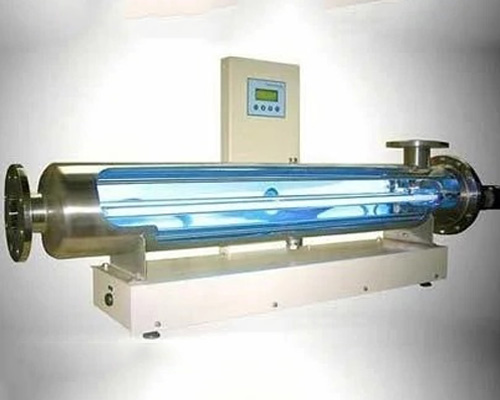UV Water Disinfection
Germs in water, in the air and on surfaces are troubling. Intensive UV light effectively and quickly reduces microorganisms. UV radiation reliably reduces germs and improves hygiene and storage conditions. To reduce the level of germs in the long term, the germ-contaminated air can already be disinfected in the supply air ducts.

How does UV disinfection work?
254 nm spectrum of a low-pressure lamp and the cell deactivation spectrum (e-coli as DIN 1031 Part 10) UV disinfection is effective at wavelengths from 200 nm to 300 nm. The UVC radiation emitted has a strong bactericidal effect. It is absorbed by the DNA, destroys its structure and inactivates living cells. Microorganisms such as viruses, bacteria, yeasts and fungi are rendered harmless within seconds by UV radiation. If the irradiance is high enough, UV disinfection is a reliable and environmentally-friendly method eliminating the need for chemicals. Moreover, the microorganisms cannot become resistant to UV radiation.
Applications for UV Water Purifiers
Applications for UV Water Purifiers UV water purifiers have proven beneficial in numerous applications, including: Food and beverage. Ultraviolet disinfection systems help food and beverage manufacturers meet stringent FDA specifications for water purity.
Pharmaceutical. Pharmaceutical manufacturers rely on ultraviolet water purification capabilities to create pure water for use in the production of medicines and for Clean-in-Place functions on manufacturing equipment.
Cosmetics Using contaminant-free water sources to manufacture cosmetics ensures a longer shelf life and improved quality for the end product. Residential/commercial drinking water. UV water disinfection systems can be incorporated into homes and offices to purify drinking water from the tap. Wastewater treatment. Municipal wastewater treatment plants use UV water disinfection systems as part of multi-stage water treatment processes.


